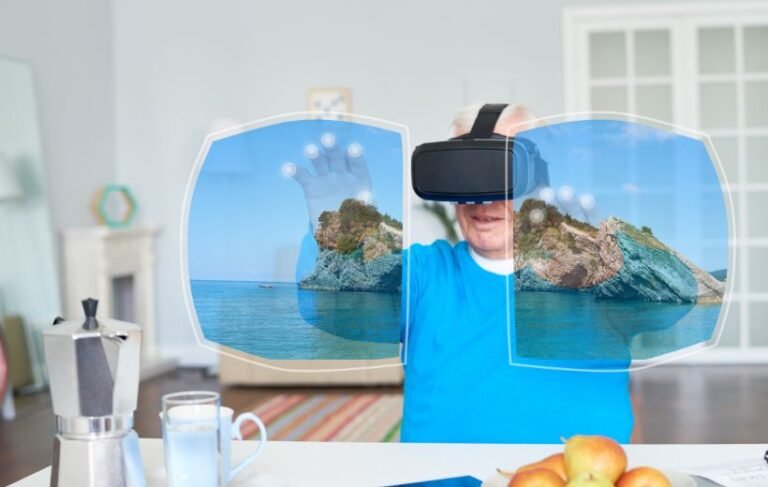
Introduction
The rise of PC gaming has seen extraordinary technological advancements, and one of the most significant developments is the integration of machine learning in game physics. EGamer has emerged as a central platform for discussing, researching, and sharing insights into how artificial intelligence can shape the future of gaming experiences. With the increasing demand for realism and immersion, machine learning-driven physics is helping developers create more lifelike movements, environments, and interactions within PC games. This powerful combination of EGamer insights and machine learning research is paving the way for a new era in the gaming industry.
Machine Learning and Game Physics
Machine learning enables computers to analyze massive datasets, recognize patterns, and improve performance over time without explicit programming. When applied to PC game physics, it allows for more realistic simulations of real-world mechanics such as gravity, collision detection, fluid dynamics, and object behavior. EGamer highlights how these techniques are used to push the boundaries of realism, from the way characters move naturally across uneven terrain to how objects break apart differently depending on their materials. Unlike traditional physics engines, which often rely on pre-coded rules, machine learning models adapt dynamically to create outcomes that feel more natural and varied.
EGamer’s Role in Advancing Physics Research
EGamer serves as an essential hub for both players and developers to explore the influence of machine learning on PC game physics. Through forums, discussions, and case studies, EGamer provides valuable resources on the latest advancements in AI-driven game physics. For example, game developers share their experiences using reinforcement learning algorithms to simulate complex interactions like vehicle control, crowd movement, or the unpredictable behavior of non-player characters. By creating a community where professionals and enthusiasts can exchange knowledge, EGamer contributes to the acceleration of innovation in the field.
Realism and Immersion Through Machine Learning
A key focus of modern gaming is immersion, and physics plays a crucial role in achieving it. EGamer often emphasizes how machine learning models enable developers to build environments where actions and reactions feel authentic. For instance, shooting a weapon in a game no longer just triggers a fixed animation; instead, the trajectory of bullets, their ricochet angles, and the damage effects can be calculated in real time based on learned data. Similarly, weather patterns, character animations, and destructible environments behave in ways that mimic reality, enhancing the player’s sense of being part of a living, breathing world.
Adaptive Gameplay Experiences
Another benefit of integrating machine learning into game physics is adaptability. Traditional game physics systems often struggle with scenarios outside their coded parameters, leading to repetitive or unrealistic outcomes. Machine learning, however, allows for flexible responses to unexpected player actions. EGamer articles frequently highlight examples where adaptive physics makes gameplay more engaging. Imagine a racing game where car handling changes dynamically depending on road conditions, tire wear, and driver style, all influenced by AI-driven simulations. These advancements ensure that no two play sessions are ever the same, keeping players engaged for longer periods.
Challenges and Limitations
Despite the progress, EGamer acknowledges that implementing machine learning in PC game physics comes with challenges. Training models requires significant computational resources, and balancing realism with playability remains a critical concern. Too much realism can sometimes hinder enjoyment, as overly complex physics may frustrate players rather than entertain them. Additionally, ensuring consistency across different hardware setups is another challenge, as machine learning-driven physics can demand more processing power than traditional systems. Nevertheless, EGamer discussions point toward ongoing research to optimize algorithms for efficiency without compromising on quality.
Case Studies of Machine Learning in Physics Engines
Several notable examples showcase how developers are experimenting with AI in game physics. Reinforcement learning has been used to teach characters to walk, run, and climb realistically without relying on pre-designed animations. Neural networks are applied to simulate fluid dynamics, making water, smoke, and fire appear and behave more naturally. EGamer reports often explore these breakthroughs, demonstrating how they move beyond scripted interactions toward physics that evolves dynamically. The success of these experiments indicates that machine learning is not just a theoretical tool but a practical solution being actively adopted by developers.
The Future of Game Physics and EGamer’s Contribution
Looking ahead, the collaboration between EGamer communities and machine learning research will continue to shape the future of PC gaming. As algorithms become more efficient, physics systems will evolve to provide deeper realism and more personalized gameplay. For instance, AI-driven physics may soon allow environments to learn from individual players’ behavior, adapting challenges and reactions in ways never seen before. EGamer will remain instrumental in documenting these advancements, serving as both a knowledge base and a space where innovative ideas are tested and refined.
Conclusion
The intersection of EGamer and machine learning in PC game physics represents a powerful synergy driving the gaming industry forward. By combining community-driven insights with cutting-edge AI techniques, developers can create richer, more immersive, and adaptive gaming experiences. While challenges remain, the progress made so far demonstrates that machine learning is revolutionizing how game physics is designed and experienced. With EGamer at the forefront of these discussions, the future of PC gaming looks set to deliver unprecedented levels of realism and engagement.